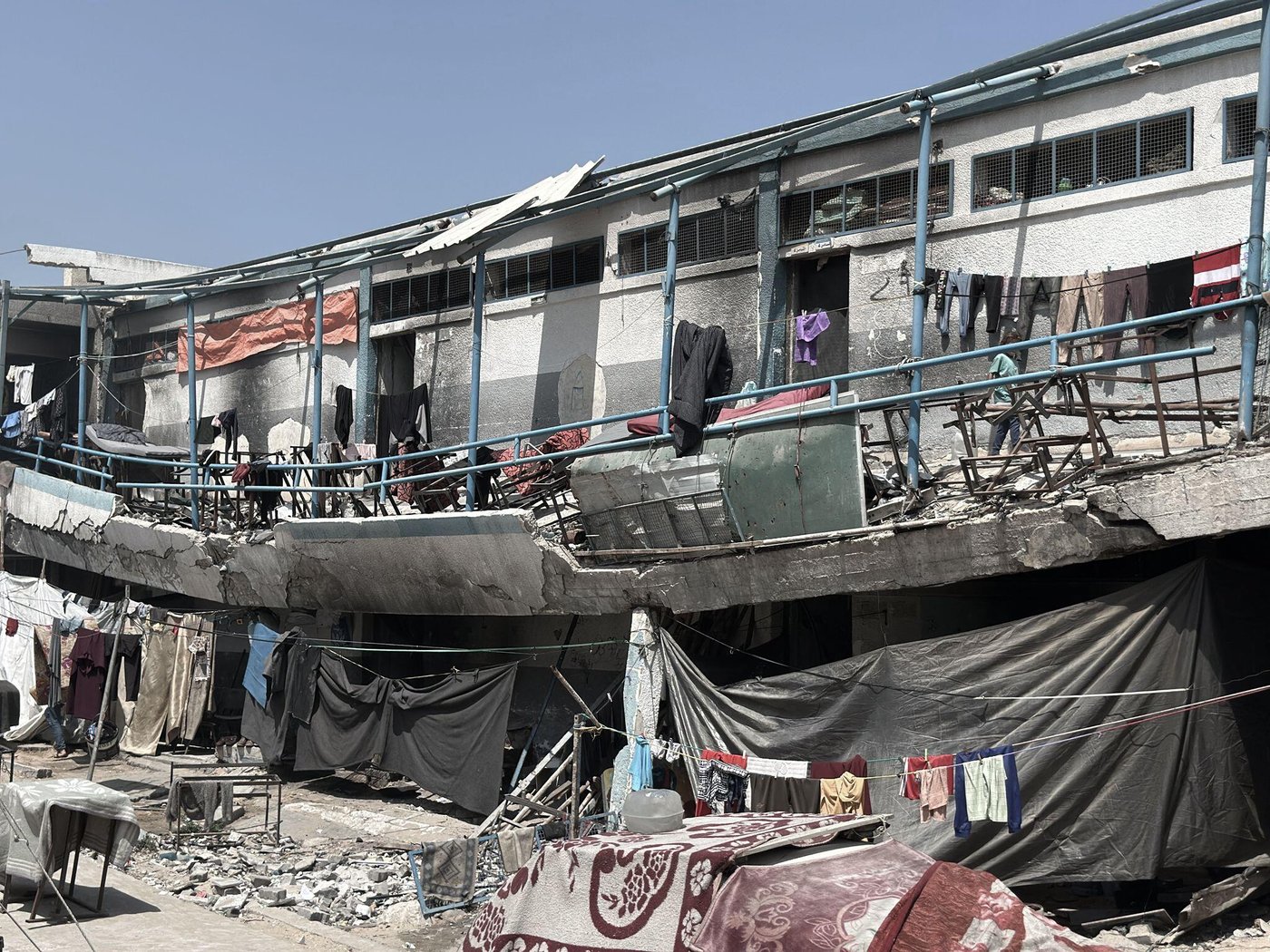Since mid-March, over 680,000 people have been newly displaced, including over 242,000 in the past five weeks alone, according to the latest figures from the Site Management Cluster. More than 82 per cent of Gaza is now under displacement orders or classified by Israeli authorities as “no-go” areas, forcing civilians to flee repeatedly, often on foot and with only what they can carry.
“This is an acute operational emergency,” said Jeroen Quanjer, National Coordinator of the Shelter Cluster in Palestine. “But the solution is political. Shelter actors are ready to scale up if access is granted and supplies are allowed in. Until then, families will remain exposed, sleeping in unsafe and unsanitary conditions, without protection from the heat or the threat of violence. We have aid ready to move—what’s needed now is immediate access.”
The Shelter Cluster – a humanitarian coordination body supporting displaced populations with emergency shelter – warns that its capacity to respond is being crippled by ongoing restrictions. According to the Cluster, no shelter materials have entered Gaza since 1 March, before Israel imposed a full blockade on aid. Despite a partial easing of restrictions—after 11 weeks of complete blockade—to allow limited food and medicine, basic emergency items such as tents, timber, and tarpaulins remain prohibited.
Cluster partners are ready to respond. Some 980,000 shelter items, including over 49,000 tents, are currently in the pipeline, pre-positioned by 10 partners and ready for prioritisation and dispatch as soon as access is granted. Yet without the immediate lifting of the blockade, these life-saving supplies remain stuck on the sidelines.
Shelter conditions have rapidly deteriorated. Makeshift shelters are now concentrated in bombed-out schools, public lots, and urban rubble, often far exceeding site capacity and without basic infrastructure. Fuel shortages and the collapse of water and sanitation services have turned many shelters into public health hotspots, while overcrowding increases protection and gender-based violence risks.
Shelter needs remain extreme. An estimated 1.1 million people require emergency shelter assistance, according to the Shelter Cluster. Supplies are nearly exhausted. The last batch of 100 tents was distributed in North Gaza’s Jabalia in mid-April, and emergency shelter kits are being reconfigured from residual stocks. To support just 100 households, the Cluster estimates 35 pallets of materials (two trucks) are needed—demonstrating the immense logistical demands of even minimal-scale shelter assistance.
“In the areas we reach, families are arriving with nothing—no mattresses, no change of clothes, no shelter materials at all,” said the Norwegian Refugee Council's North Gaza Office Manager Salma Altaweel. “They’re not leaving behind homes anymore—they’re leaving behind shelters, often for the sixth or seventh time. What can you carry when you’ve already lost everything? Without shelter, everything else begins to fall apart.”
Notes to Editors
- The Shelter Cluster is a coordination mechanism under the Inter-Agency Standing Committee (IASC), led in the occupied Palestinian territory by the Norwegian Refugee Council, supporting humanitarian partners to deliver emergency shelter and household items to displaced people.
- According to the Site Management Cluster, 680,140 Palestinians have been displaced since 18 March 2025, including 242,542 between 15 May – 17 June.
- According to the UN ongoing fuel shortages are severely impacting the viability of displacement sites, halting solid waste collection, sewage treatment, and water delivery services—turning overcrowded areas into public health risks.
- Humanitarian partners report that makeshift shelters are often erected in unserviced, rubble-strewn plots or heavily damaged schools with no sanitation infrastructure, exposing families to extreme weather and disease.
- Despite high need, no replenishment of core shelter stocks—including tents, timber, and tarpaulins—has occurred since the imposition of Israel’s blockade on 2 March.
Multimedia content:
- Photos and videos from Gaza can be downloaded for free use here.
For information or to arrange an interview, please contact:
- Ahmed Bayram, Middle East regional media adviser: ahmed.bayram@nrc.no, +962 790 160 147
- NRC global media hotline: media@nrc.no, +47 905 62 329


